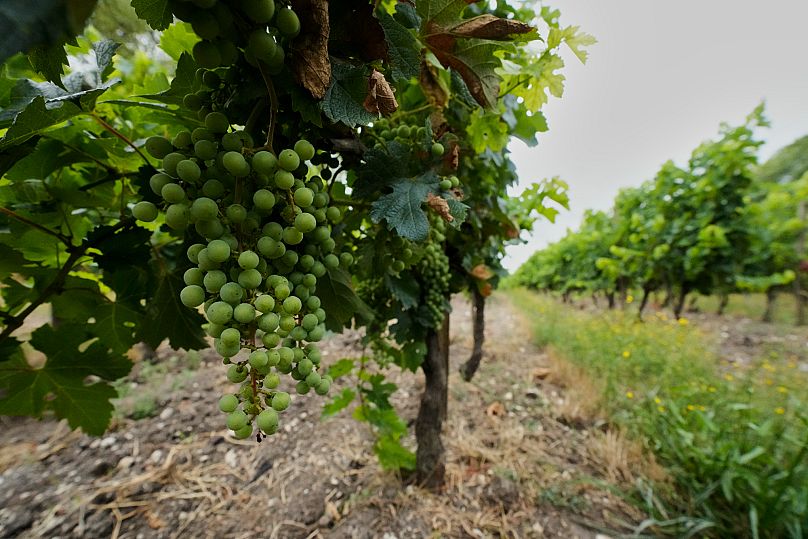French winemakers this year have been forced to bring forward the 2025 harvest earlier after high temperatures have caused grapes to ripen earlier than at the traditional wine harvesting season of September to October.
Harvesters in France's Château Carbonnieu have found that temperatures approaching 40C have caused strain to white wine grape clusters.
Under hot conditions and a lack of water, berries have ripened ahead of schedule.
"The harvest used to begin on September 15, you see, and today is August 19. This global warming phenomenon is now much more reminiscent of Mediterranean climates," Eric Perrin, owner of the Château de Carbonnieux, says.
Climate change continues to challenge French viticulture
As a result Château Carbonnieu's whites are bearing a "much more Mediterranean than Atlantic signature", Perrin explains.
The winegrower has been harvesting since the 1980s, and while he did experience hot summers like the one of 1989 and 2003, high temperatures have gradually increased since 2018 to present day and become the norm rather than the exception.
The impact of the heat causes grapes to hold a higher sugar content which, through the fermentation process, translates into higher alcohol content wines.

"Before, over ten years, we had two great vintages, about five average ones and about three that could be poor. Now, with this warming, we have much higher quality in our wines," Perrin explains.
Grapes used in white wine production, in particular, face a problem here, because France's strict rules for protected designations of origin (AOC) wines also establish allowed sugar contents.
Meeting these new requirements is the job of oenologist of the family, Andrea Perrin. The main problem lies in this excess sugar, which is driving the harvest from this 45-hectare area to alcohol levels of around 14%.
Apart from clashing with AOC regulations, white wines of such high alcohol content generally are not popular with the drinkers.
Fortunately, "this doesn't represent a large area," the oenologist explains. So, Perrin is counting on later harvesting from "the preferred terroirs for white wines," namely the clayey soils that preserve water and acidity. Grapes from there, he hopes, will compensate for the high sugar levels of this first harvest to achieve alcohol levels of around 12 or perhaps 13% in the final cuveé.







